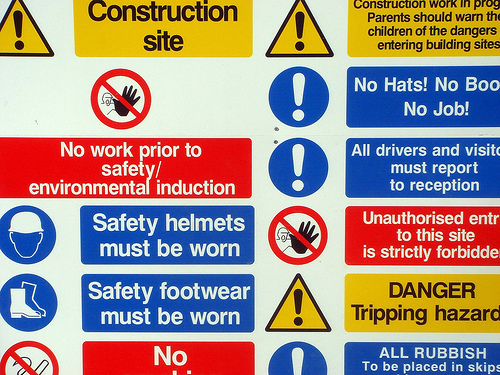Protect health and safety in the workplace
Based on NZQA 497
People credited with this unit standard are able to: identify and describe legislative rights and responsibilities for workplace health and safety; describe the systems approach to workplace health and safety; and explain how hazards are defined in the HSE Act.
Contents
- 1 This unit is used in the following courses
- 2 Identify and describe legislative rights and responsibilities for workplace health and safety
- 3 Describe the systems approach to workplace health and safety
- 4 Explain how hazards are defined in the HSE Act.
- 5 Create field inspections and checklists to maintain workplace safety
This unit is used in the following courses
Identify and describe legislative rights and responsibilities for workplace health and safety
- Responsibilities of employers under the HSE Act are identified and described.
Range: responsibilities include but are not limited to – taking all practicable steps to ensure the safety of employees, providing personal protective clothing and equipment, managing hazards, providing supervision and training.
- Responsibilities and rights of employees under the HSE Act are identified and described.
Range: responsibilities and rights include but are not limited to – protecting the health and safety of self and others, using protective clothing and equipment, the right to refuse unsafe work, to be adequately supervised and/or trained.
Describe the systems approach to workplace health and safety
- The principal systems are described in terms of their requirements.
Range: principal systems include but are not limited to – emergency procedures, training, employee participation, incident and hazard reporting, hazard management.
- The hierarchy of hazard management controls is described in terms of eliminating, isolating, and minimising hazards.
Range: evidence is required of two examples each of eliminating, isolating, and minimising hazards.
Explain how hazards are defined in the HSE Act.
- Hazards are defined in terms of the requirements in the HSE Act.
Range: evidence is required of examples of four different types of hazards.
Create field inspections and checklists to maintain workplace safety
Checklists are essential to maintain safety and quality control of a project. They are also vital to stay compliant with HSE systems.
Find safety checklists to download here: http://safetyculture.io/checklists/construction
